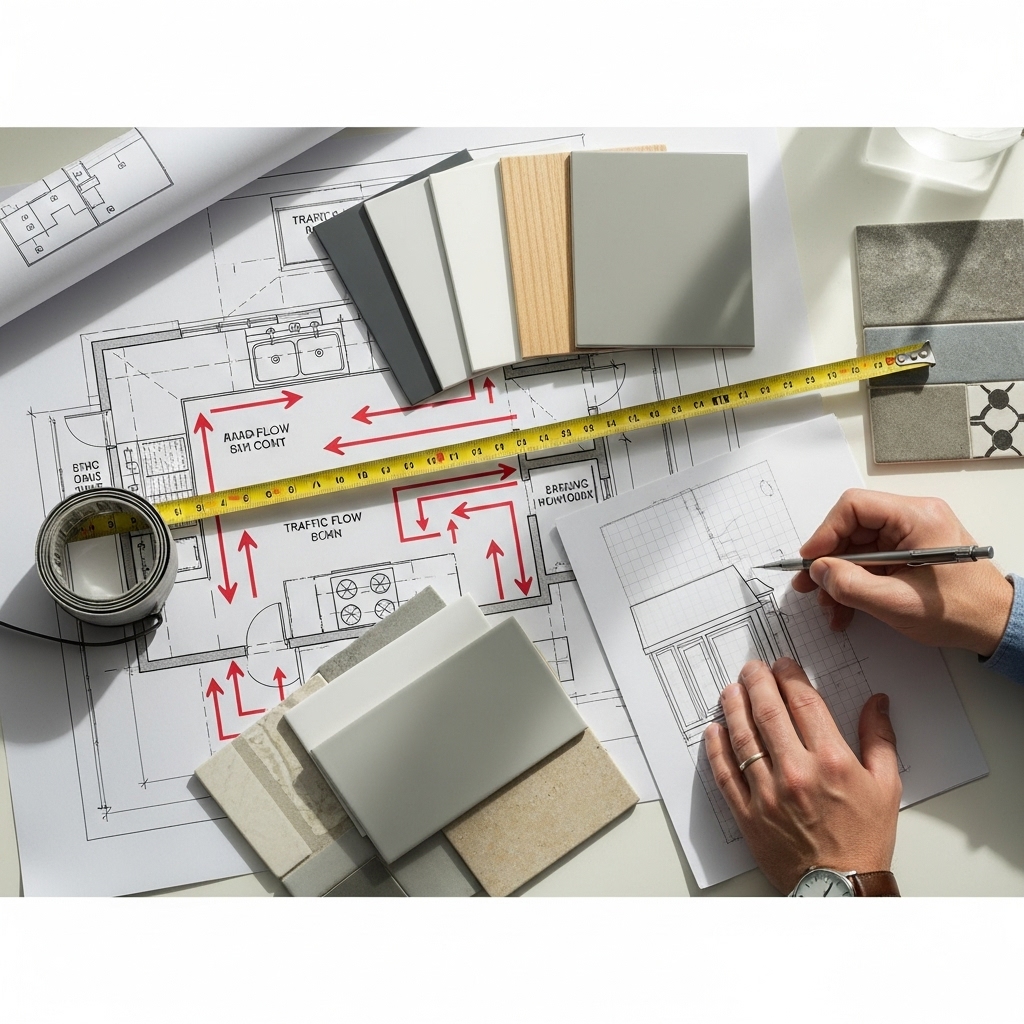
Remodeling a kitchen in Renton can be exciting—you finally get the layout you’ve dreamed of, the ventilation that handles real cooking, and materials that suit our Pacific Northwest lifestyle. Yet I’ve walked through too many projects where small missteps snowballed into frustrations. The good news is that most pitfalls are predictable and avoidable with a steady plan, clear priorities, and the right partners. If you’re just beginning, consider leaning on professionals who offer end-to-end kitchen remodeling services so you sidestep common traps and keep momentum from design through the last touch-up.
The goal is not perfection; it’s a kitchen that functions beautifully, feels cohesive, and holds up to everyday life in our climate. With that in mind, here are the pitfalls I most often see—and how to avoid them—drawn from years of projects in neighborhoods from Kennydale to the Highlands and Maplewood.
Skipping the Layout Conversation
Many homeowners jump straight to finishes and appliances, but layout is the engine of a successful kitchen. In Renton’s split-entry homes and mid-century ramblers, that often means negotiating structural walls, stair openings, and circulation to the deck. If you don’t map clear paths and work zones early, you may end up with a beautiful island that pinches traffic or a range positioned where steam fogs the walkway. Start with scaled drawings, confirm clearances, and decide which walls can move—and which must stay—to keep the house balanced and safe.
Ignoring Ventilation and Moisture
Our damp climate magnifies the consequences of weak ventilation. A ductless hood may trap grease at the filter but does little for humidity. Over time, moisture can ripple paint, soften trim, and encourage mildew in shadowed corners. Choose a hood sized to the cooktop and vent it outside with smooth, properly sloped ductwork. If code requires make-up air, plan for it; skipping that step can affect comfort throughout the house.
Underestimating Electrical Needs
Older kitchens often rely on a handful of circuits. Add modern appliances and layered lighting, and you’re out of capacity. Don’t wait for nuisance trips to tell you there’s a problem. Plan dedicated circuits for major appliances, add GFCI/AFCI protection, and verify panel capacity. Good electrical planning makes the space safer and clears the way for details like dimmers that give you control over mood.
Choosing Materials That Fight the Climate
High-gloss cabinets can amplify glare on bright days and show every fingerprint. Soft stones near sinks stain under PNW cooking routines. Slippery tile becomes treacherous when wet. Choose finishes that flourish here: matte or satin cabinet coatings, quartz or leathered stone that resists etching, and floor materials with texture. The right choices reduce maintenance and keep the space looking composed.
Neglecting Lighting Layers
A single ceiling fixture can’t do the work of ambient, task, and accent lighting. Without layers, counters look dim and photos look flat. Plan recessed or low-profile ambient lights, undercabinet strips for tasks, and pendants or a linear light to anchor the island or table. When winter nights arrive early, your kitchen will still feel alive and welcoming.
Forgetting Storage Strategy
Cabinet counts alone don’t guarantee organization. Without pull-outs, tray dividers, and deep drawers, you’ll end up stacking and shuffling. In Renton homes where space is precious, every cubic inch counts. Map where small appliances, bulk goods, and everyday dishes will live. Add a landing zone near the garage entry if that’s your family’s route into the house. Storage that anticipates life keeps clutter at bay.
Unpermitted Work and Paper Gaps
Cutting corners on permits might seem to save time, but it often backfires. Inspectors are not the enemy; they are partners in safety. Permitted, inspected work gives you peace of mind and strengthens your hand at resale. Keep invoices, manuals, and permit records—buyers and their agents will notice the professionalism.
Misreading Scale
It’s easy to fall for an oversized range or a massive island you saw online. In many Renton homes, those pieces overwhelm the room and choke circulation. Use tape on the floor to test island size and seating. Verify door swings and appliance clearances. A right-sized island with thoughtful seating beats a behemoth that makes every path an obstacle course.
Value Engineering in the Wrong Places
Budget discipline is smart, but cutting costs in the wrong places leads to disappointment. Don’t skimp on cabinet boxes and drawer hardware; these are the workhorses you touch daily. Invest in proper ventilation and lighting. If savings are necessary, adjust tile scope, hardware, or decorative lighting first. Structural and functional elements deliver value the longest.
Rushing the Finish
The final days make or break perception. Gaps in caulk, paint touch-ups left undone, and misaligned doors telegraph haste. Give yourself time for a thorough punch list. The kitchen will look polished, and you’ll sidestep small annoyances that erode satisfaction.
Overlooking Neighborhood Context
Design that fits a Kennydale view home may not suit a cozy Highlands bungalow. Calibrate finish levels and style to the house and street. A restrained palette with a few elevated details often reads as higher quality than a room that tries to do everything at once.
Not Planning for Life During Construction
Living through a remodel is doable with a plan. Identify a temporary coffee station, protect high-traffic floors, and set expectations about work hours and site cleanliness. Good communication reduces stress and keeps the project on track.
Poor Sequencing
Out-of-order decisions cause rework. Confirm layout and infrastructure before ordering cabinets. Finalize appliance specs before electrical rough-in. Approve lighting plans before ceilings are closed. Simple sequencing prevents headaches and change orders.
Neglecting Acoustics
Open kitchens bring people together, but hard surfaces can amplify noise. Choose a quiet dishwasher, use underlayment that softens footfall where appropriate, and consider fabric nearby—barstool seats, a rug in the adjacent living area—to tame echo. A kitchen that sounds good feels good.
Underestimating Cleanup and Maintenance
Every kitchen needs care. Choose grout colors and sealers that are forgiving, specify cabinet paint that resists scuffs, and plan for hood filter maintenance. A few decisions up front will save hours of upkeep later.
Mid-Project Supply Surprises
Lead times fluctuate. Order long-lead items early and verify availability before demolition. Keep a short list of alternate choices that harmonize with your palette so a single backorder doesn’t derail the design.
The Middle Course: Working with the Right Guide
The common thread in successful remodels is an organized team that keeps priorities straight. If you want a partner who steers design, permitting, scheduling, and finishing details, look for providers who deliver comprehensive kitchen remodeling services. You’ll benefit from a clear roadmap and decisions made in the right order, which is the surest way to avoid missteps.
FAQ: Avoiding Kitchen Remodeling Pitfalls
What’s the number one mistake homeowners make? Skipping layout planning. Beautiful finishes can’t fix poor circulation or cramped work zones. Start with flow, then refine materials.
Can I remove a wall to open my kitchen? Often, yes, but you must verify whether it’s load-bearing and how it affects seismic performance. A structural assessment ensures you maintain safety while gaining openness.
Do I need permits for a remodel that changes only finishes? Cosmetic updates may not require them, but as soon as you modify electrical, plumbing, ventilation, or structure, permits are typically necessary in Renton. Permits protect you during and after the project.
How can I keep the project on schedule? Confirm decisions early, order long-lead items ahead of demolition, and keep a tidy punch list. Regular site check-ins help catch small issues before they grow.
What should I splurge on? Invest in layout corrections, cabinet boxes and drawer hardware, ventilation, and lighting. These elements carry daily use and underpin the kitchen’s feel for years.
Is an island always the answer? Not always. In some spaces, a peninsula provides better seating and circulation. Test options at full scale with tape before committing.
Next Steps
Avoiding pitfalls isn’t about playing defense; it’s about building the kitchen you’ll enjoy every day. Start with a clear plan, verify the essentials, and pace decisions so they support each other. If you’d like a steady hand from concept to completion, partner with a team that provides full-service kitchen remodeling services. With a thoughtful guide, you can sidestep the usual missteps and finish with a kitchen that feels right the moment you turn on the lights.

